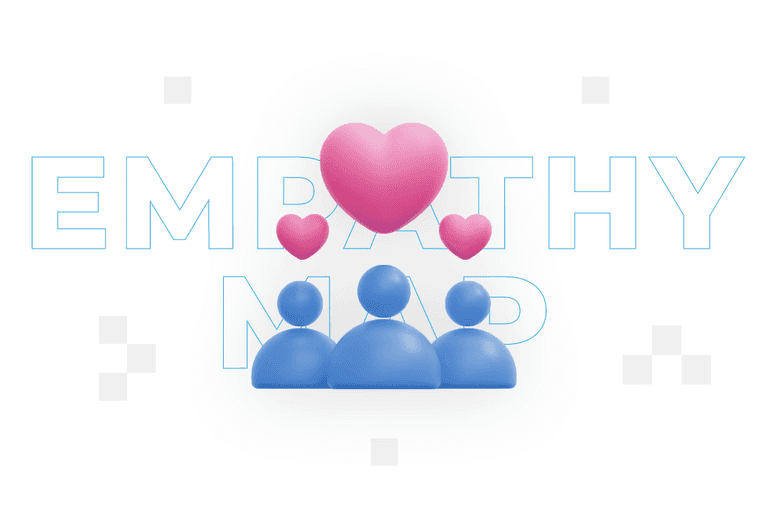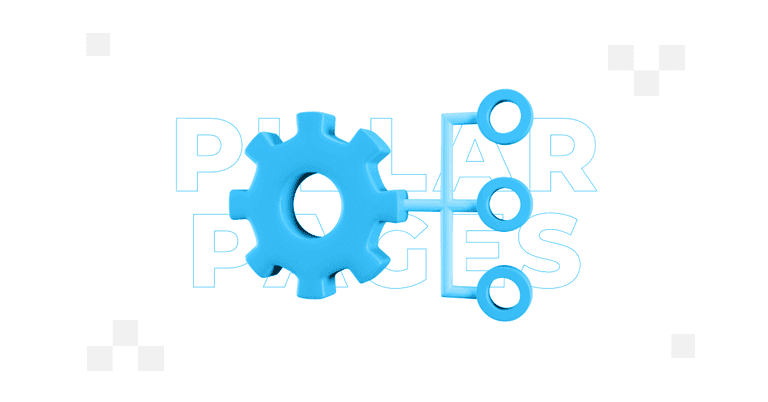
Empathy map – what it is and how to profile users?

“Empathy, empathy, try to feel what I’m feeling” – so sang in one episode of Seasons of Adventure. Empathy is not only one of the most important human abilities, it is also crucial in business. To understand customer expectations, empathy maps are often developed. What are they and how do they enable empathy?
What is empathy?
Before defining an empathy map, it is necessary to define what empathy is. The PWN Encyclopaedia states that empathy is ‘the ability to empathise with the inner state of another person’. In other words, it is the ability to understand, to empathise with the feelings, emotions and perspectives of others. It is one of the most important social skills because it allows us to form strong bonds and ensures better understanding between people.
An empathy map is a tool that is used to understand and analyse the feelings, needs, motivations and perspectives of others. It is a graphic representation of the other person’s inner experience, enabling a better understanding of their emotions, thoughts and actions.
Empathy map definition
Empathy can be understood in three ways:
- Emotional refers to the ability to feel the emotions of others. It enables people to understand what another person is experiencing and how they are feeling.
- Cognitive allows us to understand the perspective, thoughts and motivations of others. It means that we ‘put ourselves in someone else’s shoes’ and look at a situation from another person’s point of view.
- Compassion leads to a desire to alleviate the suffering of others and to give them support. It is important in building relationships and motivates us to help others.
What is an empathy map?
An empathy map is a tool to better understand the needs, feelings, motivations and goals of the people or companies your brand works with. It helps teams get to know their audience, customers or users better and allows them to develop more empathetic and effective strategies.
An empathy map is a visual tool and usually consists of six areas that help you understand different aspects of the other person’s perspective. However, it is important to remember that to achieve its full effect, the empathy map should be looked at holistically. Its elements include:
What is the person thinking and feeling?
This part helps to understand emotions, expectations and dreams. It gives insight into values, beliefs and priorities. It helps identify unconscious aspirations that may influence decisions and behaviour.
What does he or she say and do?
This element is used to analyse behaviour, messages and attitudes in the context of a particular topic or situation. By observing what someone says and does, the differences between words and actions can be revealed. This helps to indicate what is really important. It also helps to identify patterns of behaviour that can be used to predict future actions.
What does it hear?
This section identifies sources of information, influences fromothers and trends that may affect decisions. This identifies which opinions and facts are important to the person being analysed, which can help, for example, in developing brand communication strategy and marketing strategies.
What does he or she see?
This aspect helps you to understand how the environment, context or competitors influence the perception of a person or . It helps to identify opportunities and threats that may affect the perception of products, services or solutions.
What difficulties does he or she face?
In this section, challenges, fears and obstacles can be identified. Identifying the problems allows you to develop more effective strategies and methods to deal with difficult situations.
What are their goals and needs?
Identifying goals helps to understand what the person being analysed wants to achieve, what their priorities are and what is important to them. It provides information about the values that guide their decisions and what benefits or changes are important to them.
What can be gained from an empathy map?
There are a number of benefits to using an empathy map at work, both for project teams and clients. An empathy map helps you better understand what motivates, worries or interests your audience, users or colleagues. This allows you to tailor your approach, products or services to real expectations. A deeper understanding of perspectives also allows you to make better, more informed decisions.
An empathy map is invaluable in understanding the perspective of others. It can be used by different departments in your business, helping teams to collaborate better, share knowledge and better understand the needs of other departments. It can also support innovation – identifying needs and problems fosters innovative and creative solutions.
Anempathy map helps marketing teams to better align their marketing messages and strategies with their audiences, which can be important in content marketing or social media marketing, for example. Tailoring content, products and services to the real needs of customers increases consumer loyalty and satisfaction.
Anempathy map can be used as a communication tool with stakeholders such as managers, developers, designers or the marketing department. By presenting an empathy map, you can better explain why certain design decisions have been made and how they will affect the user experience.
One of the most important and long-term benefits of introducing an empathy map into the design process is building a culture of empathy in your organisation. Promoting empathy as a core value can influence your team’s approach to design, communication and collaboration, leading to more user-centred products and services.
Limitations of an empathy map
Although an empathy map is a useful tool, it has some limitations that are worth bearing in mind. First of all, it is based on a subjective interpretation of what the person analysed is thinking, feeling, saying and doing. This can make it difficult to verify the results, which may require additional research such as surveys, interviews or user testing. Additionally, the very form of the map can lead to generalisation and simplification of complex emotions, thoughts or needs, so that important details can be missed.
It is also worth remembering that if your team does not have enough information about the target group, the empathy map may be incomplete or based on incorrect assumptions. It may also inadvertently perpetuate stereotypes and prejudices.
Because the empathy map focuses on individual perspectives, it can lead to overlooking the impact of group dynamics on individuals’ behaviours, feelings and needs. The focus on individuals may mean that the solutions developed may not be optimal for the group as a whole.
To reduce the limitations and difficulties of the empathy map form, teams should obtain as much information about the target group as possible, review and update it regularly. They should also be aware of their biases and stereotypes. For better results, an empathy map is worth combining with other measurable tools and indicators.
How to create an effective empathy map?
Empathy maps can be used in areas such as product design, marketing or project management, but they take time and team commitment to create. The process consists of elements such as:
Defining the goal and target group
The first question the project team needs to answer is – who are we creating an empathy map for? At the outset, it is important to indicate whether it is doing this for customers, users, colleagues or others. Not only does this identify the target group, but also its objectives. Understanding these is key to using the developed map effectively.
The next step should be research on the specific target group. Interviews, surveys, observations or data analysis of e.g. webshop traffic will be suitable for this. The more information you collect, the more accurate your empathy map will be.
Completing the empathy map
Apply the information you have collected to the empathy map template you developed earlier. It needs to include key elements such as what the person is thinking and feeling, saying and doing, what they are listening to, what they are seeing, what their pains and difficulties are, and their goals and needs. You do not need specialised tools to create a template – a piece of paper or whiteboard and something to write on will suffice.
In addition to the project team, you can invite other departments in your company to co-create an empathy map. This allows you to build relationships between employees, and joint analysis of the information collected speeds up your work and improves the quality of your conclusions.
When completing the elements of the empathy map, remember to record observations and conclusions in the relevant areas. They should be as specific and detailed as possible.
Analysis and synthesis
The next step is to analyse the results. Look for patterns in the data obtained and draw conclusions from them. This will allow you to identify key needs, motivations and challenges that may affect your project, product or service.
The results of empathy mapping work can be used to inform decision-making, strategy development and solution design. It is a good idea to incorporate them into action plans, communications and other aspects of your project.
Share the results of the empathy map with other departments to integrate perspectives and understand how they might affect the user or customer experience. Collaboration can lead to better coordination and more efficient operations.
Regularly review the results and update
Project assumptions need to be reviewed regularly to get better results. It will be good if you carry out additional research or testing. These will give you more information and enable you to update the empathy map to reflect changes in the perceptions, needs or expectations of the target group.
Check how changes made based on the empathy map affect projectoutcomes, user satisfaction and other indicators. The conclusions of the empathy map can be the basis for continuous learning and improvement of products, services or solutions.
How to use an empathy map in UX?
An empathy map can be useful in creating UX (User Experience), as it helps designers to better understand users’ feelings, thoughts, needs and behaviours. Analysis of its results can help identify key issues when using a product or service.
Empathy maps work well in testing and evaluation of projects and can serve as a benchmark for analysing test results. It can help ensure that the solutions developed are in line not only with the results of the map, but above all with the expectations and needs of the users. On its basis, areas for improvement can be identified, but it is necessary to regularly update the results.
What is the relationship between the sales persona and the empathy map?
The sales persona and empathy map help in the design process and marketing activities. The empathy map can provide information to help develop more detailed and realistic sales personas. A sales persona, on the other hand, can serve as a starting point for creating an empathy map that aims to understand the specific feelings and experiences of customers. Teams can first create personae to identify key customer or user segments. Then, an empathy map can be created for each of these to explore emotions, thoughts, needs and behaviours.
Contact form
Develop your brand
Rate content:
You may be interested in:





